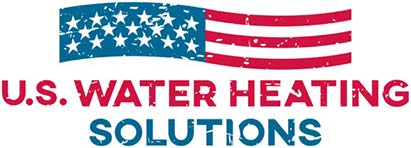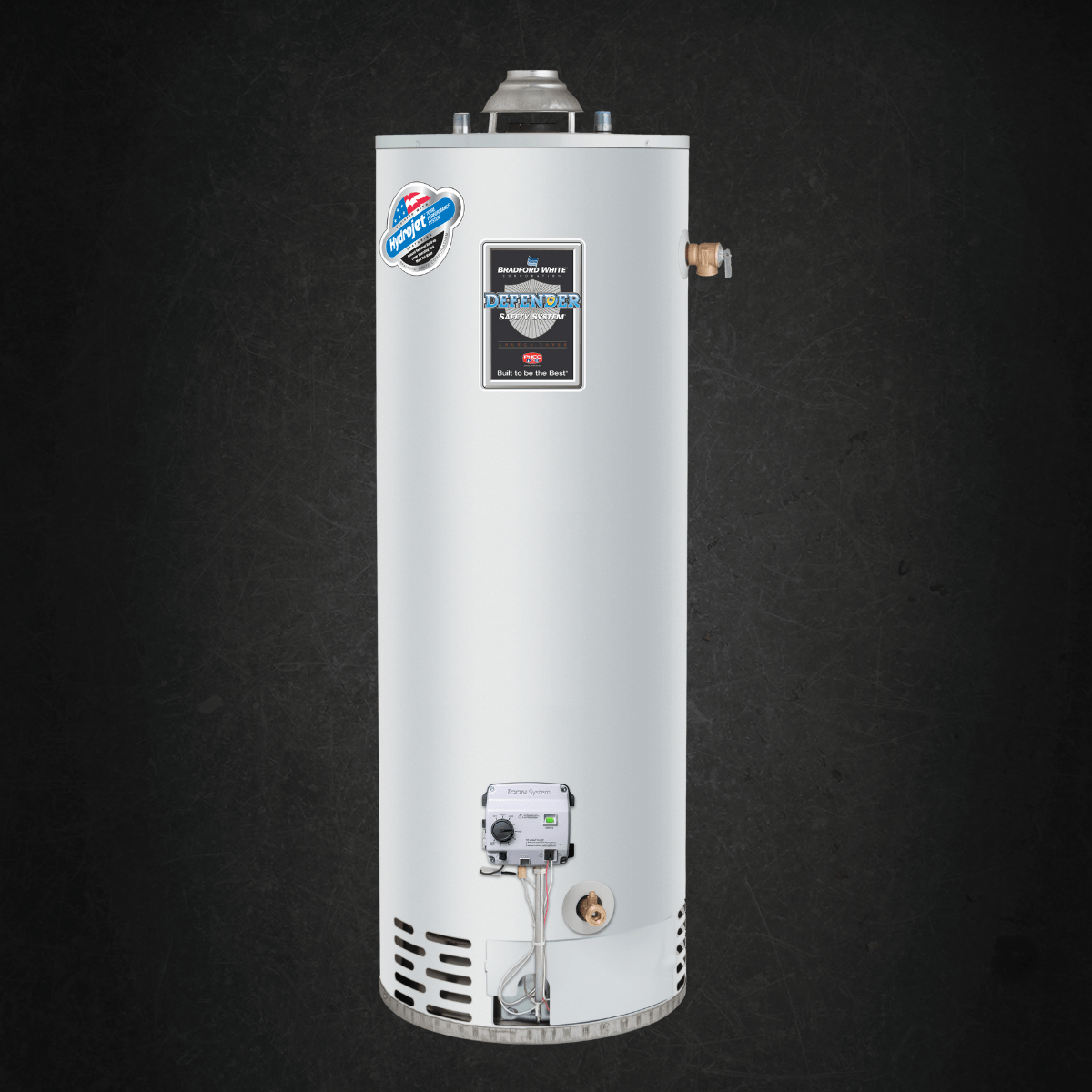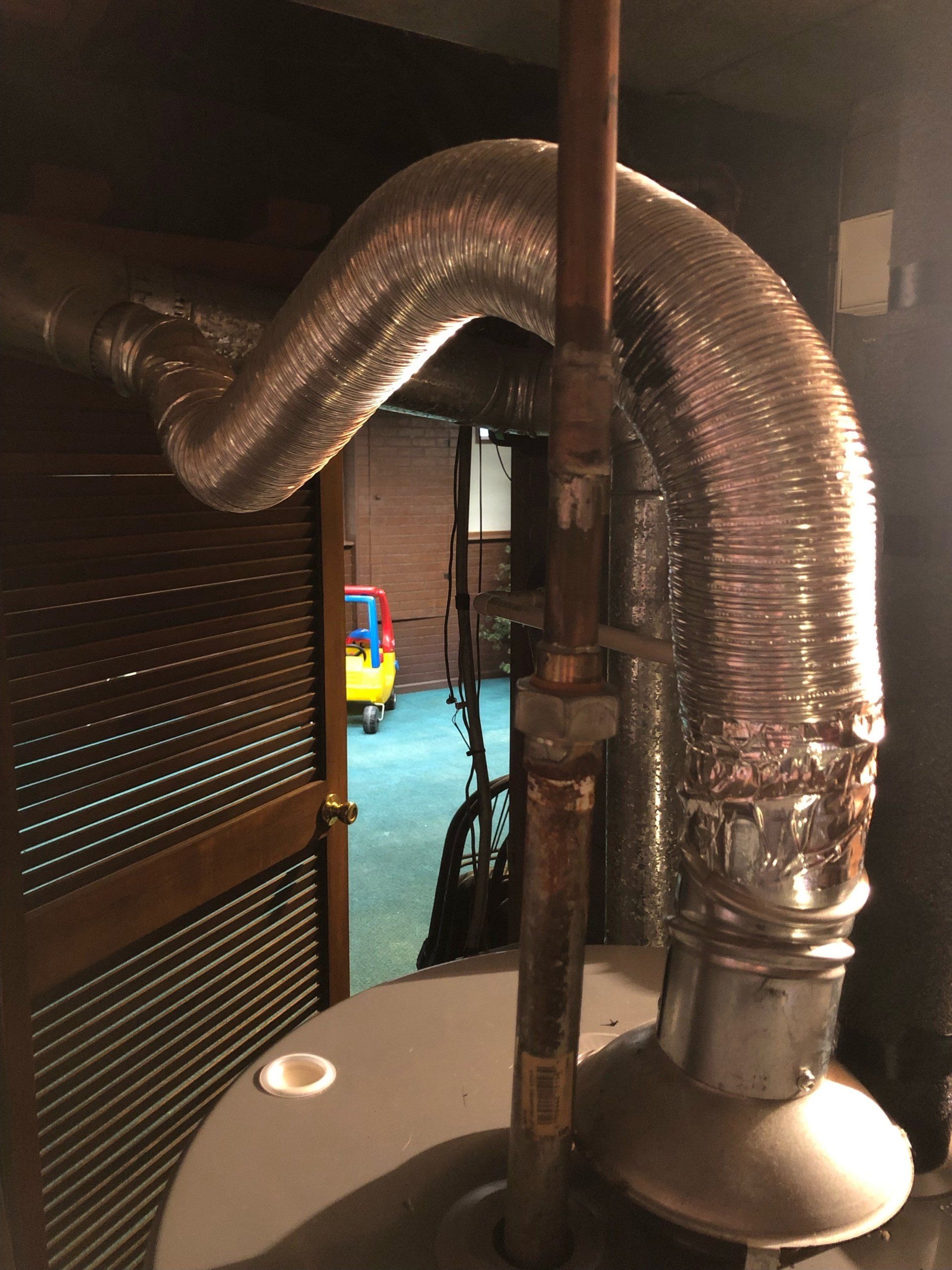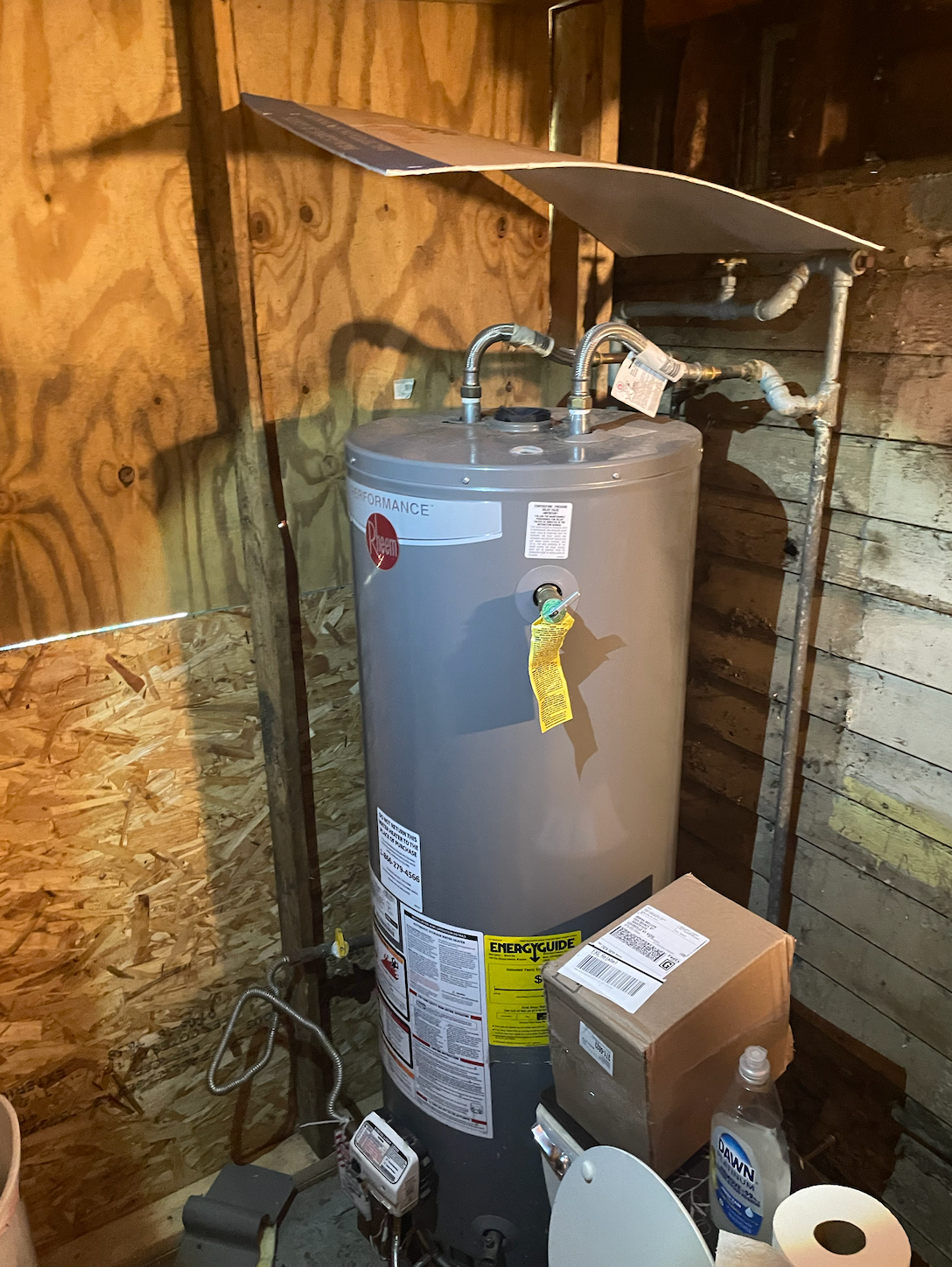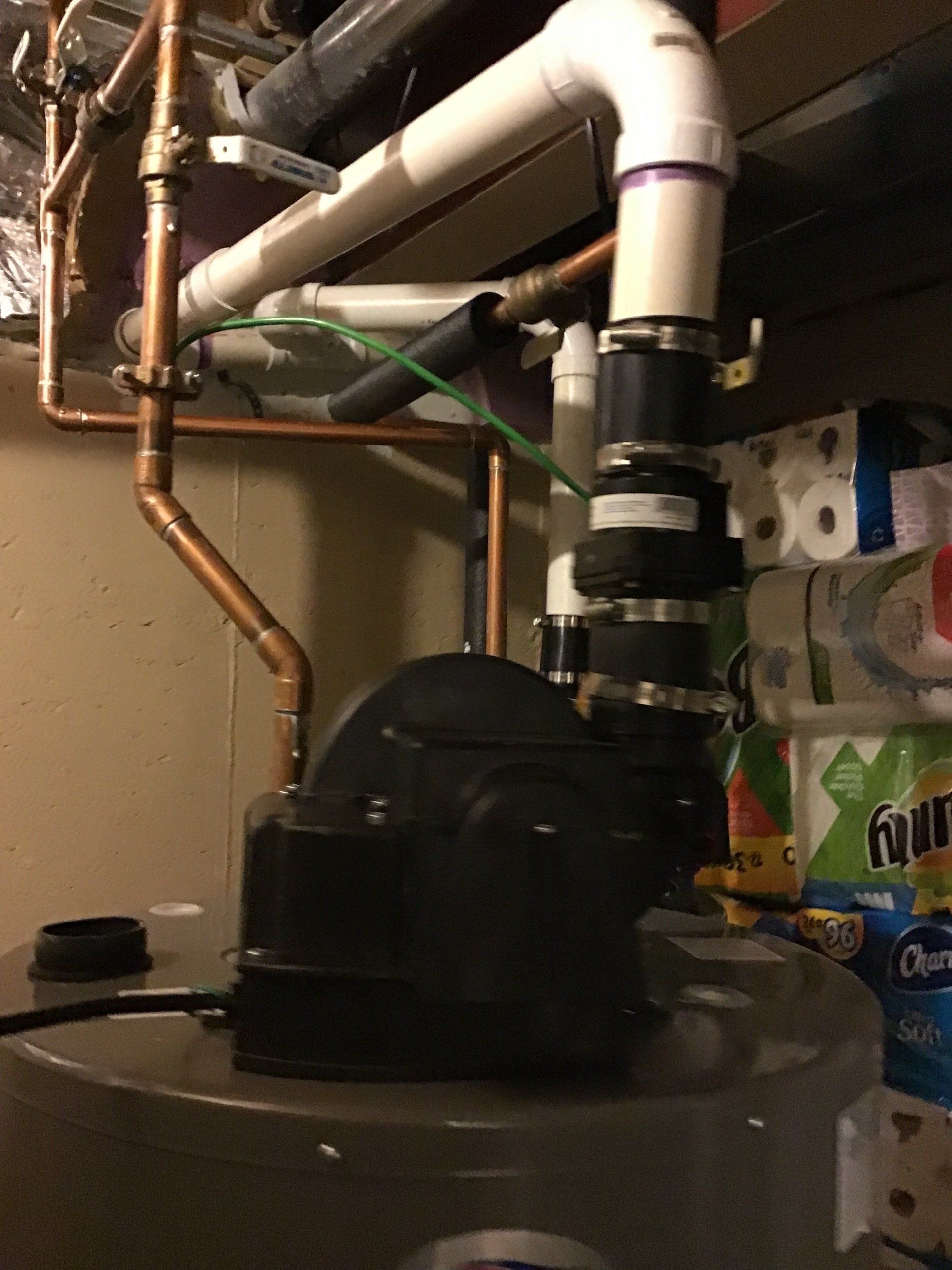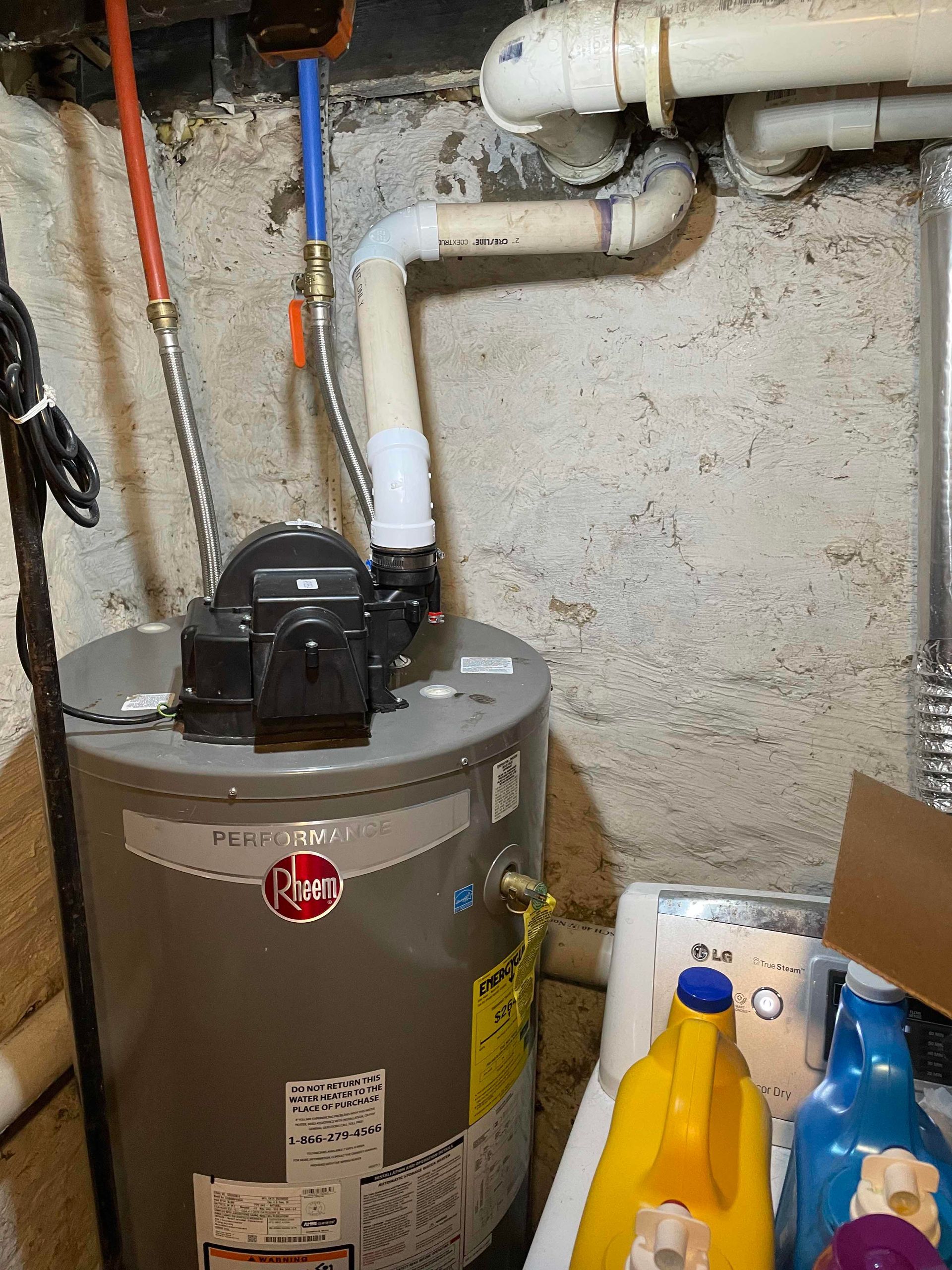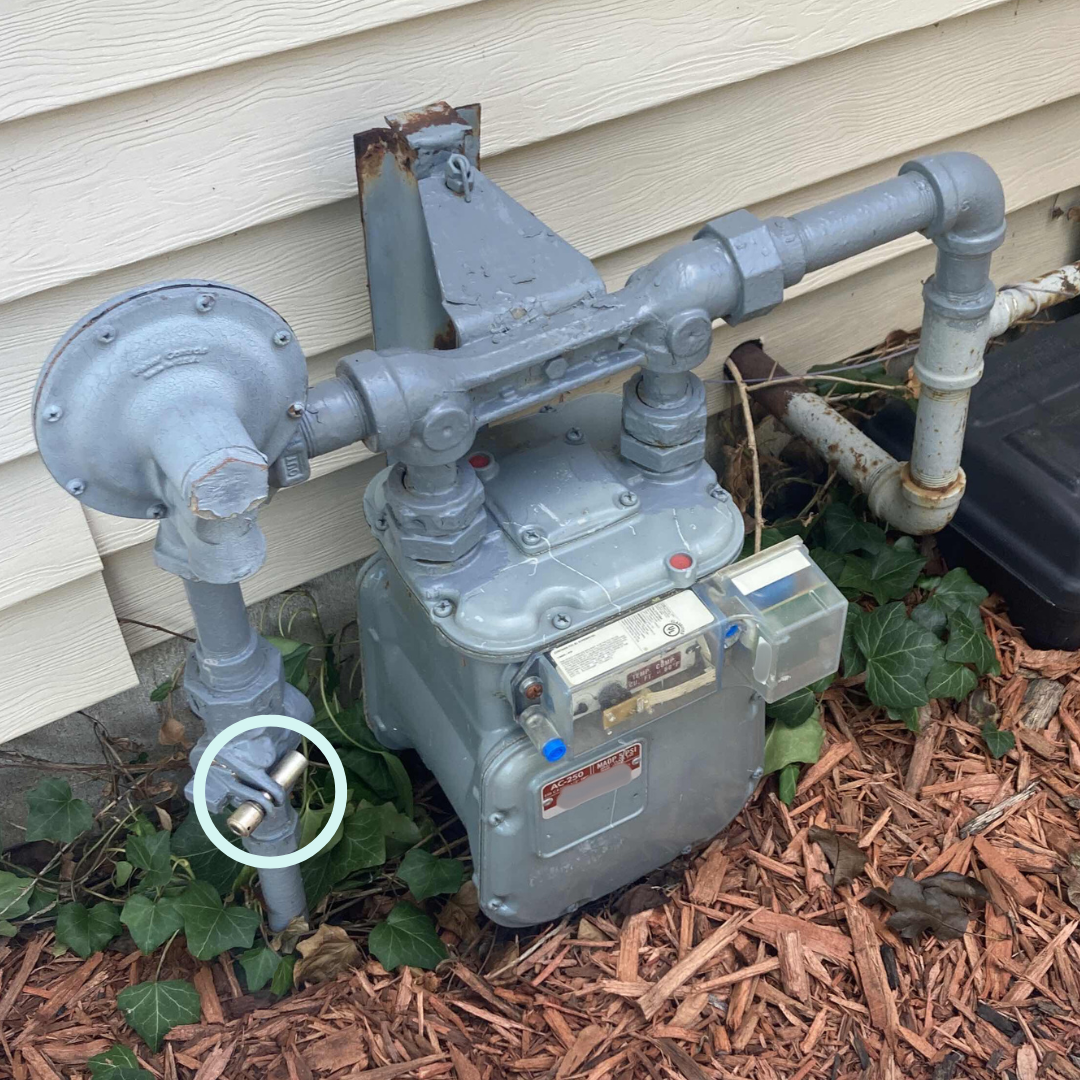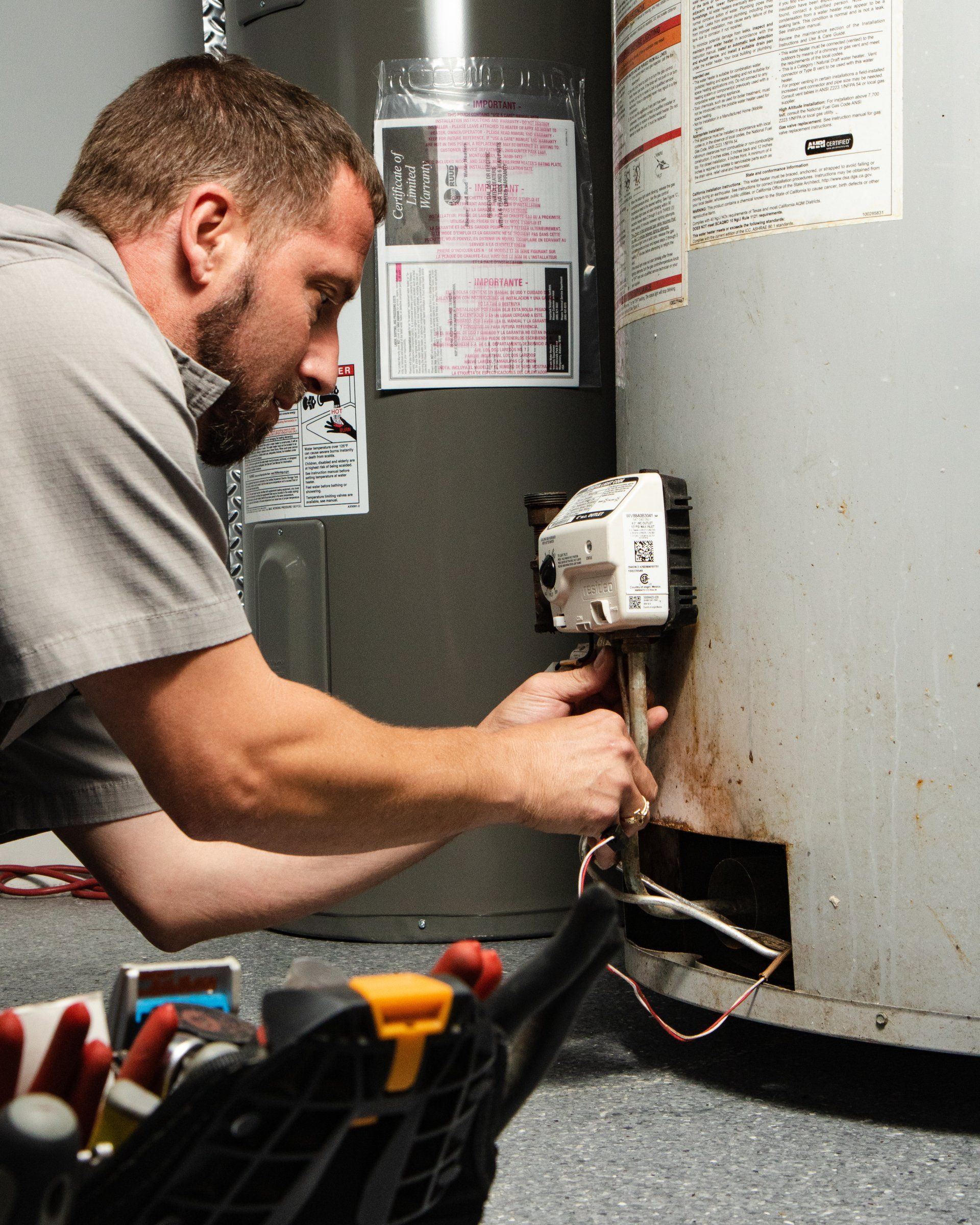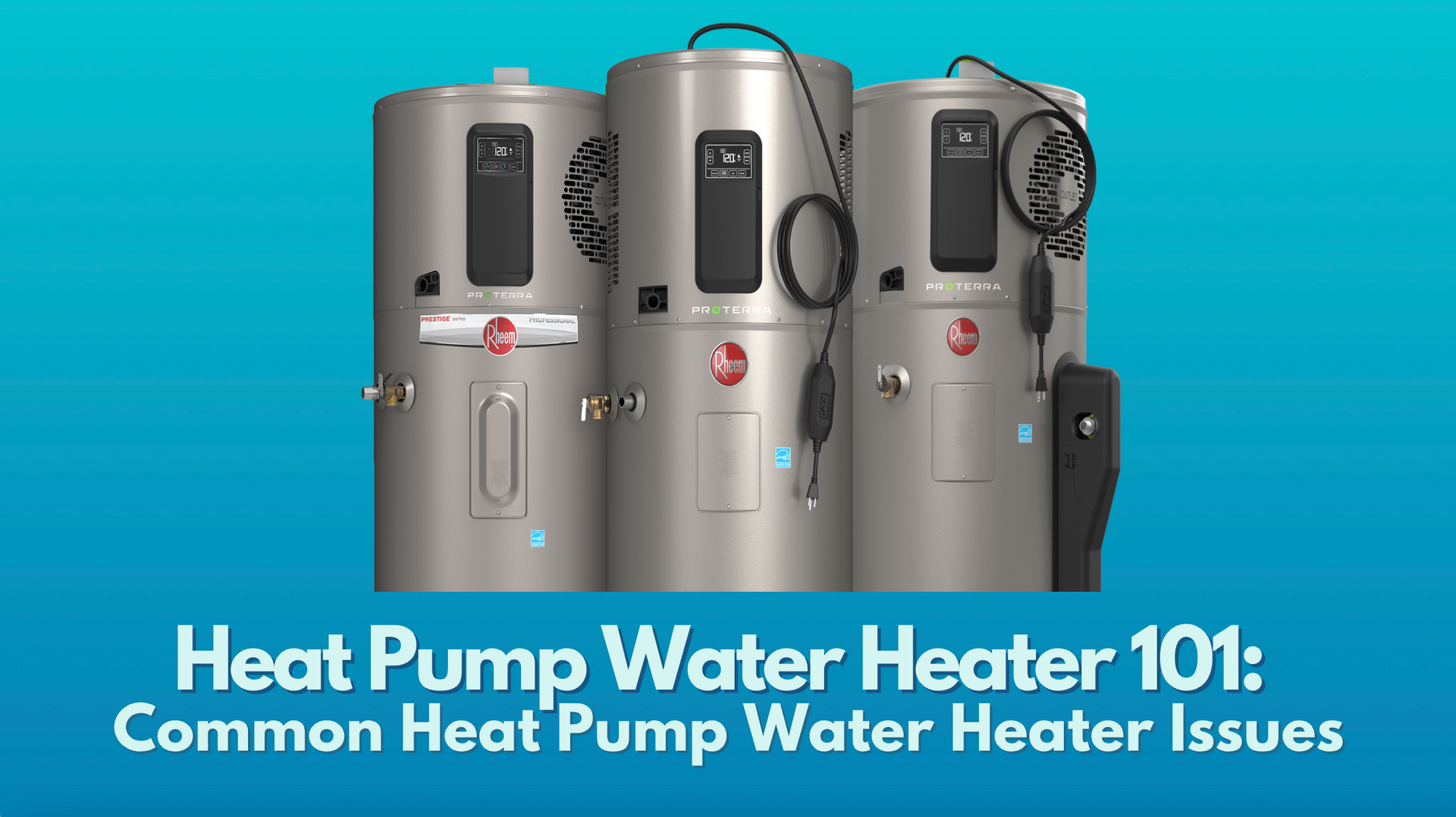The Most Common Gas Water Heater Problems
***DISCLAIMER: PLEASE REFER TO YOUR MANUFACTURER’S INSTALLATION MANUAL FOR INFORMATION REGARDING YOUR SPECIFIC MODEL. IF YOU ARE ATTEMPTING TO SERVICE YOUR OWN HEATER, PLEASE DO SO WITH CAUTION; U.S. WATER HEATING SOLUTIONS, LLC. AND ANY OTHER PARTIES MENTIONED ARE NOT RESPONSIBLE FOR ASSOCIATED LIABILITIES. THIS ARTICLE IS MEANT TO PROVIDE AN INFORMATIVE AND EDUCATIONAL SUMMARY AND DOES NOT SUPERSEDE OFFICIAL WATER HEATER REPAIRS OR MANUFACTURER INFORMATION.
Gas Water Heaters: Troubleshooting Common Problems
When you have a problem with your gas water heater, you will need to repair it or replace it, depending on a number of various factors. Your technician will troubleshoot the unit to diagnose the problem and replace the necessary parts or make adjustments to your venting; if repair is not an option, your technician will provide options for replacement.
Here's how a technician may troubleshoot your gas water heater, but first, let's do a quick review...
Gas Water Heaters: The Basics
Gas water heaters heat water using a gas supply of natural gas or propane. There are several differences between the two, but, in summary: natural gas typically costs less, while propane is considered more environmentally friendly.
In a tank type gas water heater, the water enters the tank, where it’s directed to the bottom through the dip tube. The low temperature of the incoming water triggers the thermostat shank on the gas control valve. The gas valve controls the gas flow to the unit. When gas comes in contact with the burner, it is ignited by the pilot assembly. The burner can then heat the water in the tank according to the setting on the temperature control. All gas water heaters also require proper ventilation to rid your home of the flue gases emitted by the heating process.
Your water heater also contains additional parts that are not mentioned in this brief summary such as the anode rod which prevents the tank from corroding, and insulation prevents heat from escaping the tank. Learn more about water heater parts here.
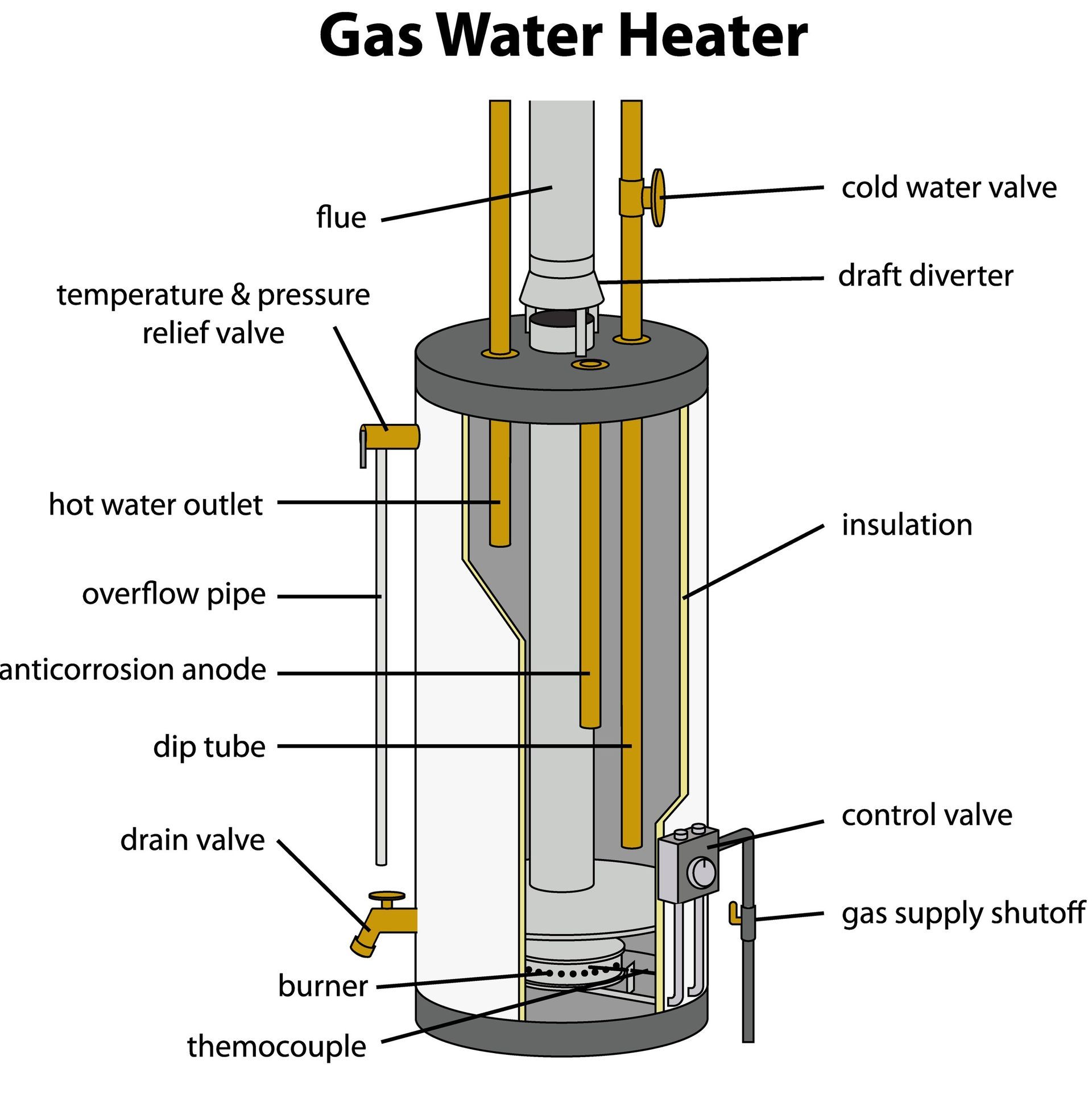

Overview: Gas Tankless Water Heaters
Although they aren't the main focus of this article, tankless gas water heaters have many similar parts: gas valve, burner, etc. Aside from the difference in size, tankless gas water heaters heat the water using a heat exchanger.
A flow sensor will activate the burner when water reaches the minimum flow rate; the heat from the burner is then transferred to the water via the heat exchanger (a.k.a. heat exchange, a series of copper or stainless steel tubes).
Tankless units tend to operate more efficiently than tank type water heaters since they don't experience standby heat loss.
Issue 1.0 | Poor Ventilation
There are multiple types of ventilation setups for gas water heaters:
- Standard Atmospheric Water Heater | connected to existing ventilation system and vented up through the ceiling
- Power Vent Water Heater | vented with the assistance of an electric blower fan
- Direct Vent | unique ventilation that draws combustion air from outside
- Power Damper Gas Water Heater | these combo units have a mixture of features of the aforementioned water heaters. They are a type of high efficiency Standard Atmospheric water heater. Some models have an automatic damper, while others have metal B-Venting and are supported with a fan motor assembly (somewhat similar to a Power Vent Water Heater's blower assembly).
How to Identify Poor Ventilation
You (or your service technician) can
identify poor ventilation with a carbon monoxide meter, using an indoor air quality test, or checking for soot. There are some cases, however, where a visual look at the water heater may enable our team members to diagnose potential venting issues before arriving on site.
Standard Atmospheric Water Heaters
Standard atmospheric water heaters often experience poor ventilation due to improper installation. Although it is imperative to check your local plumbing code and the water heater installation manual, you should be weary of:
- Large amounts of tape (especially duck tape)
- Use of dryer venting
- Mixed vent materials (e.g., metal b-vent connected to PVC)
- Melting
- Lack of vent pipe
- Missing draft hood (a metal piece that almost looks like a hat and sits on top of the water heater; it guides the flue gas up into the vent pipe)
- Use of PVC Pipe
- Venting Obstruction
- Lack of Chimney Cap (where applicable)
Power Vent Water Heaters
Many of our customers with power vent water heaters have poor ventilation as a result of incorrect installation; Here are some common signs of venting issues with a power vent water heater:
- Discolored PVC Venting | When your PVC venting is pink, red, brown, black, etc., it is a sign that your vent pipe is overheating an immediate service is required
- Multiple PVC couplings stacked on the blower assembly
- Mixed vent pipe diameters
- Vent sagging
- Backdrafting: Intake and exhaust are too close to one another and the exhaust ("dirty air") is coming into the unit via the intake
- Obstructed Screens in Intake and Exhaust
Bottom Line: Improper Water Heater Ventilation is DANGEROUS
Poor ventilation can lead to backdraft, which refers to natural gas fumes returning back into your home instead of escaping out the exhaust, including carbon monoxide. This can greatly decrease air quality and result in illness or death from exposure; in 2019, an Ohio family died from carbon monoxide exposure caused by their tankless water heater and in 2012, an 18-year old died from water heater carbon monoxide exposure at an apartment complex in Idaho.
Always get professional installation to insure proper ventilation and never assume the venting for your new unit is exactly the same as your old water heater. You should also keep the ventilation clean and ensure there are no blockages.
To learn even more about common water heater venting issues, click below to see our more in-depth articles featuring mini customer case studies:
Issue 2.0 | No Hot Water - Pilot Light Out
A standard pilot light ignition requires a constant flame. Once the gas control valve senses the water temperature drop, it will allow more gas to enter the burn chamber, and rectify the flame through the burner to heat the water.
If the pilot goes out, it may simply need to be relit. In some cases, extreme weather conditions such as high winds or rain storms can result in the extinguishing on the pilot. In order to relight the pilot, you need to set the gas valve to “pilot”. While continuing to hold the pilot button in you will press the igniter button until you see the pilot light. For non-electronic gas valves you will continue holding the pilot button after the pilot lights for at least 15 seconds to allow the thermocouple to heat up. For electronic gas valves that have a status light, you will continue holding the pilot button until the gas valve clicks and the status light starts to blink steadily. Please be sure to check the instruction on the front of your water heater and in your water heater manual's troubleshooting guide.
Pilot Light Continuously Goes Out
If the pilot light continuously goes out and/or continuously needs to be relit, there is likely a larger problem causing you to lose hot water. Some of the more common issues include:
Dirty or Malfunctioning Thermocouple or Pilot Assembly
A thermocouple is a component that tells the gas valve that the pilot is lit, in turn telling the gas valve when to open/close. When dirty or worn from continuous use, the thermocouple may not send adequate resistance gas valve. This may close the gas valve, causing the pilot to go out. A temporary solution may be removing and cleaning the thermocouple. If cleaning the thermocouple doesn’t work, you’ll need to replace it with a different one. Depending on the age of your unit, the thermocouple itself may be available for individual sale or you may have to purchase a new pilot assembly.
Gas Valve Failure
Because the water heater gas valve is responsible for providing the water heater's fuel source, gas valve failure may prevent the pilot assembly from staying lit, due to insufficient gas flow.
Venting issues
In the case of ventilation problems or lack of combustible air, the technician will examine the current ventilation setup to diagnose the problem before resolving it. While true with most of the repairs we will talk about, only professional technicians should attempt to repair
ventilation issues. The requirements are very specific and incorrect ventilation can create a hazardous environment, as
the water heating process results in the production of carbon monoxide.
Issue 3.0 | Inconsistent Hot Water
In the case of inconsistent hot water, where you get some hot water but not enough, the two most common causes are: worn temperature sensors or thermostat shanks on the gas valve and undersized water heaters. If your water heater does not produce sufficient hot water, there may be additional causes.
Worn Gas Valve Thermal Well and Shank
(a.k.a. temperature sensor or thermostat shank) senses the temperature of the water inside the water heater and calls for more gas to heat the water. If the sensor becomes worn, it may not call for gas as often as necessary, resulting in inconsistent hot water production.
- Diagnostic Process: Diagnosing a faulty gas valve temperature sensor typically requires a technician to run various tests. Some of the diagnostic tests include:
- Checking the temperature setting on gas valve: One of the most common issues related to temperature output is the temperature setting on the gas valve knob. Be sure your gas valve is on and not set to vacation mode. We do not recommend increasing the temperature above the manufacturer's recommended setting to avoid the risk of scalding.
- Checking the incoming water pressure
- Checking the incoming gas pressure
- Checking the flow rate
- Checking the water temperature nearby: Opening the faucet closest to the water heater and using an infrared thermometer to test the water temperature
- Water Heater Volume Test / Bucket Test: Filling a bucket with cold water, then hot water to determine the water heater's flow rate and recovery time
Undersized Water Heater
Another issue which may lead to inconsistent hot water production is having a water heater that is too small for your needs.
A tank type water heater holds warm water in the storage tank until it's needed. Once the hot water in the tank is used up, it refills with cold water and heats the new water, which can take some time (this is called the recovery rate).
A tankless water heater produces hot water on demand, meaning you’ll never have to wait for a tank to refill (permitted your hot water demand, flow rate, and usage fall within the tankless water heater's normal operating conditions). However, every fixture in the home shares the hot water. You’ll need a unit that produces enough hot water to satisfy multiple fixtures at once, depending on your needs.
Other Common Causes of Inconsistent Hot Water
Other causes of this could be a problem in the plumbing system such as a faulty shower cartridge causing hot and cold water to mix when it should, a crossover in your plumbing (i.e., cold and hot water pipes crossed into one another), or a leak elsewhere in your plumbing system.
Faulty Shower Cartridge, Faulty Faucet Cartridge
Shower and sink faucets both have a cartridge inside. There are many different types of cartridges which control different faucet outputs; some control outgoing water speed and other control the faucet's outputs. The presence of a faulty shower cartridge or faulty faucet cartridge often becomes hyper noticeable after water heater repair or replacement. This is often the result of resolving an issue within the closed plumbing system, then opening the faucet to find the water below the expected temperature due to sediment build-up or a worn cartridge. Replacing the faulty shower cartridge or faulty faucet cartridge should resolve the issue.
Plumbing Crossover
A plumbing crossover occurs when cold water pipes and crossed with hot water pipe in your plumbing system. In other words, there is hot water entering your cold water pipes and cold water entering your hot water pipes. This issue is considered a plumbing system issue and not a water heater issue because the water heater is producing hot water, but the water coming out of your fixtures does not match the temperature setting on the water heater.
Like faulty cartridges, plumbing crossovers are the most noticeable after water heater repair, replacement, or additional plumbing services. Crossovers are most common among commercial water heater clients, but our residential water heater clients also have had crossovers they discovered after replacing their water heaters and using fixtures that were previously underused. Diagnosing a plumbing crossover may require a significant time investment depending on the number of fixtures on site, size of your plumbing system, and accessibility of your pipes.
Leak in Plumbing System
A leak in your plumbing system may also contribute to inconsistent hot water production. Temperature fluctuation in your region can cause your pipes to expand or contract, leading to potential leaks.
Loose Thermocouple Connection
The thermocouple is essentially a metal sensor (usually made of copper) that is inside your water heater pilot assembly. The thermocouple is responsible for detecting whether there is a flame/if the burner assembly is lit; then it sends an electronic signal to the gas valve, communicating whether the gas valve should open or close. If there is a weak connection between the thermocouple and the gas valve, there may not be sufficient gas entering the water heater to produce the desired water temperature.
Issue 4.0 | My Water Heater is Leaking. Can It Be Fixed?
During normal use of your water heater you should not experience any type of water leak. If your water heater is leaking, whether it can be fixed depends on the location of the leak. Many homeowners mistake plumbing leaks for water heater leaks. If you are not sure whether your water heater is leaking or it's a plumbing leak, we recommend taking a picture and/or video of the leak to share with your service provider.
Can my water heater leak be repaired?
If there is a plumbing leak or a leaking part, chances are the water heater leak can be repaired.
If your water heater tank is leaking at the seam or from the interior water tank (the outer grey tank you see is not the actual water heater tank!), the leak cannot be repaired.
- In this case, corrosion has caused the tank to deteriorate and weaken such that it develops a leak. This is particularly common for customers with older tank type water heaters that are 7+ years old or sooner if your water heater has not be maintained.
- A lack of preventative maintenance and annual flush can lead to a leaking water heater because sediment tends to build-up at the bottom of the unit. Then, the sediment gets heated on a regular basis, which may cause popping sounds, eventually leading to hot spots, and ultimately causing an internal leak.
- If your water heater is brand new and has an internal leak, it will likely qualify for warranty replacement.
Why can't you repair my leaking water heater tank?
If your water heater tank is leaking, you will need to replace the entire unit because a leaking tank could only be repaired via welding,
if
the leak diagnosis could be narrowed down to the leak coming from the tank. However, welding the leaking water heater tank would over-strengthen that specific area, while the other seams stay the same. Furthermore, a rusted water heater tank can also reduce the water quality.
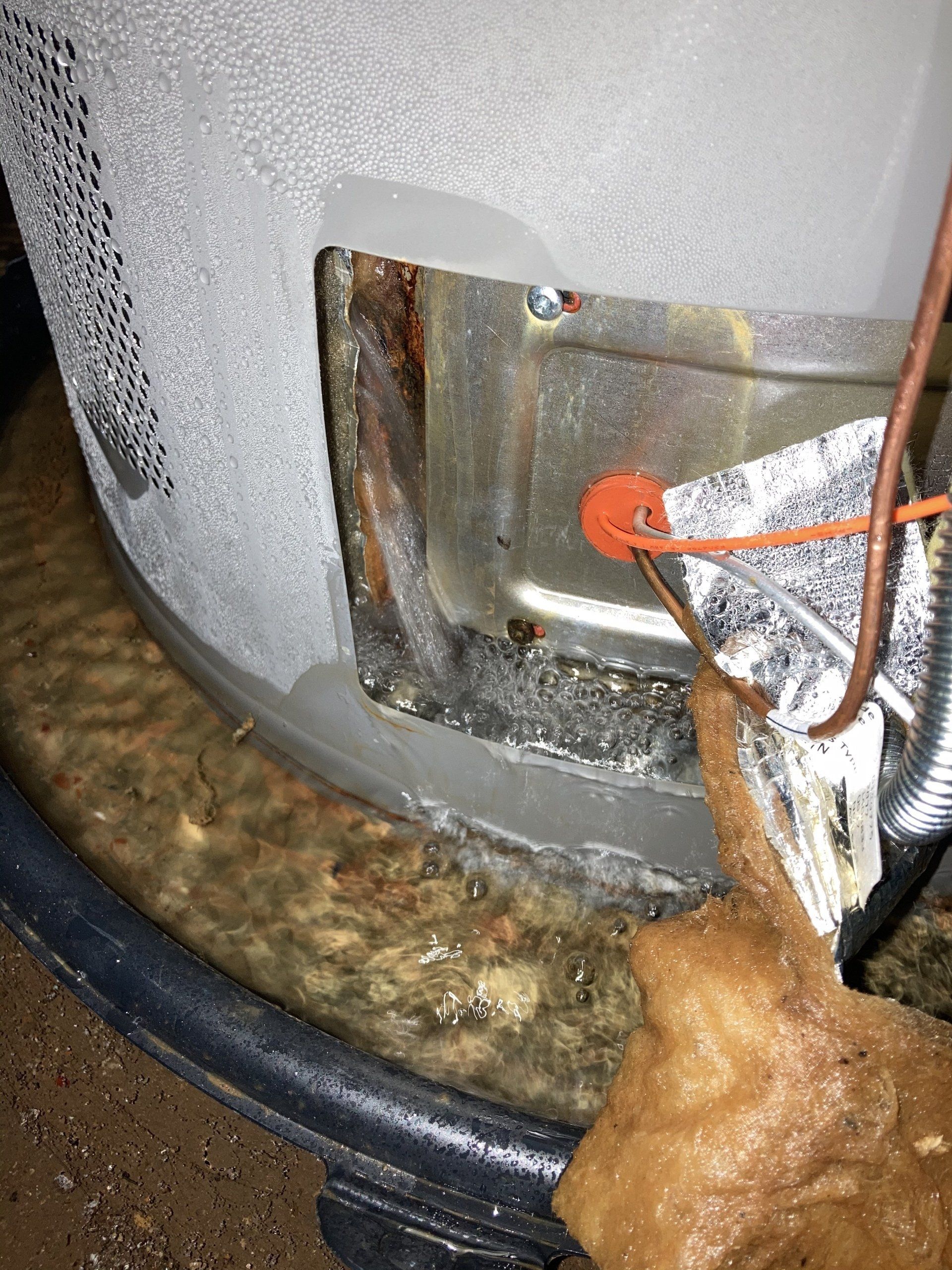
Common "Water Heater Leaks" and Possible Solutions
Here are some common "water heater leaks" our technicians see:
- Leaking Incoming Water Line | Depending on the incoming water temperature (the temperature of the cold water that will flow through the cold inlet and into your water heater) and the temperature of air in your home, it is possible that the pipes "sweat" or develop condensation that drips down onto your water heater.
- Dip Tube | The water heater dip tube is responsible for guiding the incoming cold water down towards the burner to be heated. Sometimes the dip tube can sink down into the water heater, usually a result of damage sustained during transportation of the unit. You may see small leak or pool of water dripping from the top of the water heater.
- Temperature and Pressure Relief Valve (T&P Relief Valve) | Sometimes excess pressure levels can cause minor pools of water from the pressure relief valve.
- Possible Solutions: In this situation, it is possible you have a faulty T&P Relief Valve that simply needs to be replaced. However, the service technician will also explore whether there's a root cause of the leaking T&P Valve, like high pressure levels inside of the tank.
- High pressure levels can occur due to failed or non-existing pressure regulating valves (PRVs) and/or thermal expansion tanks.
- The pressure can also occur if the temperature setting is extremely high. To resolve these issues, consider investing in preventative maintenance for (semi-)annual check-ups.
- Drain Valve |
Sometimes, water leaks from the
drain valve. The drain valve is located at the bottom of the unit and allows you to empty the water heater. If it is not closed or is damaged, water may start to leak from the drain valve. In order to resolve this issue, a service technician will either tighten the drain valve or replace it.
Issue 5.0 | Poor Water Quality
When water appears discolored or smells bad, you’ll want to resolve the issue.
Smelly water, often described as a “rotten-egg” smell, can be resolved with a zinc
anode rod. Aluminum and magnesium anode rods may hinder corrosion, but they won’t get rid of the bacteria creating the sulfuric odor.
If the water appears discolored, that could indicate lead or rust in the water. Test the water to get answers about the current condition of the water. Two of the most common toxins found in hot water include lead and rust. High lead counts indicate lead pipes and hardware that you may want to replace. Rust will come from corrosion inside of the tank. You’ll need to flush the water regularly and replace the water heater when necessary.

Issue 6.0 | No Incoming Gas, Gas Leak
No Hot Water - No Gas, Gas Meter Locked Out
In the event that you forget to pay your gas bill or do not have your LP tank refilled, you will not have gas to power your water heater. Even if your water heater has power and incoming cold water, it will not produce hot water without an adequate gas supply.
In the past, we have had customers whose natural gas services were temporarily terminated due to non-payment of their bills. Despite their natural gas provider locking out the gas meter to their homes, there was still a small amount of natural gas in their pipes, which enabled the clients' water heaters to attempt to fire without producing hot water.
Before calling a service provider, please be sure you have paid your gas providers and that the gas meter to your property has not been locked out.
Inconsistent Hot Water - Gas Leak
In the case of a leak in the gas line, you will likely smell gas in the room. While gas is naturally odorless, gas companies add the chemical mercaptan as a safety measure.
A gas leak is considered a plumbing emergency. If you feel safe enough to do so, you should turn off gas to the unit and the main gas valve coming into your property; refrain from lighting candles, smoking, etc. in the area and open windows and doors to allow for appropriate circulation. Have a qualified service professional diagnose and repair the gas leak, and be sure to properly air out the space before returning to your home and restoring power to the water heater.
Diagnostic Process: A service technician will need to determine the location of the gas leak by performing some tests, then will need to repair the gas line, replacing worn pipes, faulty fittings, or faulty parts. This may include gas valve or burner manifold assembly replacement. In most cases, a technician will be able to locate the water heater gas leak using a combustible gas leak detector, checking the incoming gas pressure, and/or performing a soapy water test.
We do not recommend attempting to troubleshoot a gas leak for safety purposes!
Get Your Gas Water Heater Repaired by U.S. Water Heating Solutions
You don’t want to handle water heater repairs on your home! Even if you know how to perform diagnostics on your own, some water heater repairs may be considered "tampering," which can affect the validity of your warranty.
When you have a problem with your water heater, contact U.S. Water Heating Solutions for water heater repair in 16+ states throughout the Midwest and South.
Avoid a repair before it happens with regular preventative maintenance for your tank-type and tankless water heaters.
Don't have a gas water heater? We also offer electric water heater and
heat pump water heater repair. We can service a vast array of residential and commercial water heaters whether they're natural gas, LP, electric, or hybrid.
Contact us today at
(833) 879-4776 or
request a quote online.



